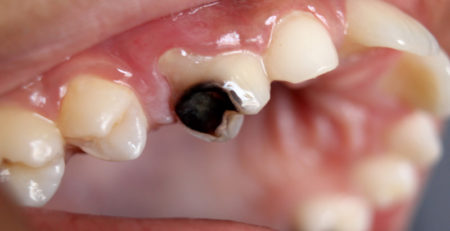First Symptoms of a Cavity
People often think cavities appear suddenly, but in reality, teeth usually send out quiet warnings before the real damage begins. These early signals can be easy to overlook, but knowing what to watch for makes all the difference in stopping a cavity before it grows worse. By paying attention to the body’s small hints, anyone can protect their smile from long-term problems.
Visible White Spots Form on the Enamel Surface of Teeth
One of the earliest signs of a cavity doesn’t look like much at first glance. White spots can appear on the enamel surface, often near the gum line or in areas where plaque collects. These spots form when minerals are stripped away from the tooth, creating weakened areas. While they might look harmless, they mark the beginning of tooth decay and should never be ignored.
These patches can sometimes disappear if treated early with better oral hygiene or fluoride. But if left alone, the enamel will continue to break down, turning those subtle white specks into noticeable damage. Dentists often say this stage is the window of opportunity to stop a cavity before it becomes permanent.

Occasional Sharp Pain Appears When Chewing Food
Biting into something crunchy or sweet may sometimes spark a quick, sharp pain in the mouth. This doesn’t mean the tooth is falling apart, but it signals that decay has started irritating the sensitive layers underneath the enamel. The pain may come and go, making it tempting to dismiss, yet it is one of the clearest warnings of a cavity forming.
If that sharp twinge repeats during meals, it usually means the enamel has been compromised enough to expose dentin, the softer inner layer of the tooth. Once this happens, bacteria can spread quickly, increasing the chances of a deeper infection. Addressing the problem at this stage can spare a person from more invasive treatments later.
Dark Staining Shows up in Pits or Grooves of a Tooth
A cavity sometimes announces itself through dark spots or discoloration on the chewing surfaces of teeth. These marks may look like coffee stains or simply darker grooves, but in many cases, they point to decay. Food particles and bacteria settle into small crevices, creating tiny breeding grounds for cavities to grow.
Unlike surface stains from drinks like tea or soda, decay-related discoloration doesn’t brush away. If the spot remains after cleaning, it may mean a cavity is developing beneath the enamel. Regular dental visits are important because professionals can tell the difference between harmless stains and early decay.
Persistent Dull Ache Lingers After Eating or Drinking
Another common sign appears not during meals, but after them. A dull ache that sticks around once eating or drinking ends can be a red flag. This happens because the cavity allows temperature changes and pressure to irritate the nerves inside the tooth. Unlike sharp pain, this discomfort tends to last longer and can even linger into the night.
This symptom often means decay has moved deeper into the tooth structure. At this point, ignoring it usually leads to a larger cavity that requires more advanced treatment. Catching it early can make the difference between a small filling and a root canal.
Bad Breath Develops Even After Brushing Regularly
Cavities create tiny hiding spots where bacteria thrive, and this often leads to unpleasant breath. Brushing and mouthwash may temporarily mask the odor, but the smell keeps returning because the bacteria live inside the damaged tooth structure. Persistent bad breath can be embarrassing, but it’s also a valuable clue that something is wrong.
Dentists point out that odor caused by cavities smells different from normal morning breath. It tends to be stronger and lingers longer. Recognizing this difference can help people take action sooner rather than later, before decay spreads further.

Rough Edges Are Felt When the Tongue Touches the Tooth
The tongue is surprisingly good at noticing changes inside the mouth. Many people discover a cavity not by sight, but by feel. A rough edge, tiny hole, or sharp spot on the tooth can signal enamel breakdown. This tactile clue is one of the simplest ways to detect decay early.
If the tongue catches on the same spot repeatedly, it usually means part of the enamel surface has worn away. Over time, that small imperfection can expand into a larger cavity. Dentists often encourage patients to trust their instincts when they feel something unusual, as the tongue often notices what the eye cannot.
Swelling or Redness Starts near the Affected Gum Line
Cavities don’t just harm teeth; they can also irritate the gums. Swelling or redness near the base of a tooth often means decay has spread close to the gum line. The body reacts to bacteria by triggering inflammation, and this creates noticeable changes in color and texture around the affected area.
Ignoring gum swelling connected to cavities increases the risk of infection spreading deeper into the mouth. Left untreated, it can even reach the jawbone. Paying attention to early gum irritation ensures that both teeth and gums stay healthy together.
Protecting Your Smile by Recognizing Subtle Cavity Warnings Before They Become Bigger Problems with Lumina Dental
Cavities rarely begin with unbearable pain. They start with subtle signs that are easy to miss, like faint white spots, odd sensations when chewing, or a lingering ache. Recognizing these small changes early makes treatment simpler and preserves more of the natural tooth. Regular dental visits and professional care can catch problems before they spiral into costly repairs.
Skilled dentists combine advanced tools with a personalized approach to stop cavities in their earliest stages. Protecting your smile begins with understanding the signs, and the right dental team ensures those signs never become bigger issues.
Take Action Early with Lumina Dental That Protects Both Teeth and Confidence for Years to Come
Every cavity that goes untreated increases the risk of pain, infection, and expensive procedures. Acting quickly not only saves teeth but also saves time and money. Early intervention preserves natural structure and prevents dental health from becoming a source of daily stress.
Lumina Dental provides the expertise and support needed to keep these problems under control. If you’ve noticed any of the symptoms above, don’t wait until the pain forces you to act. Contact us today to schedule a visit, address concerns early, and keep your smile healthy and confident for years ahead.











